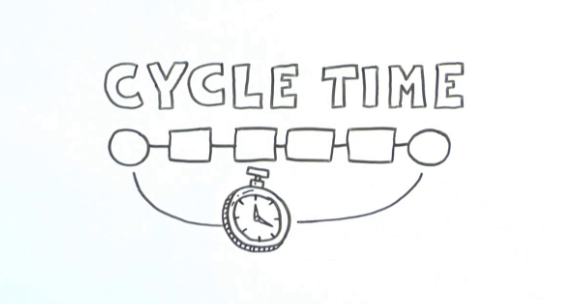If you work in manufacturing, you’ve heard the term “Cycle Time.” But what does it really mean, and why is it the most critical metric for efficiency and profitability in injection molding?
At its core, Cycle Time is the total time required to complete one full production cycle. It’s the heartbeat of your molding operation.
The Most Intuitive Definition of Cycle Time
While the technical breakdown is essential, the simplest way to understand cycle time is visually:
It is the time elapsed from the moment a finished part is removed from the mold to the moment the next identical part is removed.
In an automated process, this is the rhythm you see: a robot arm enters, extracts a part, retracts, and the machine prepares for the next shot. The time between two consecutive part removals is the cycle time.
Watch our automated cell in action. Each complete loop you see represents one full cycle time.
The Technical Breakdown of a Molding Cycle
To optimize cycle time, we break it down into its key stages:
- Clamping: The mold closes and is locked under pressure.
- Injection & Packing: Molten plastic is injected into the cavity and held under pressure to pack out the part.
- Cooling: The part solidifies in the mold. (This is typically the longest phase, often >50% of the total cycle).
- Mold Opening: The mold halves separate.
- Ejection: The robot arm enters and removes the finished part.
Cycle Time = Clamping Time + Injection/Packing Time + Cooling Time + Opening Time + Ejection Time
Why is Optimizing Cycle Time So Critical? The Capacity Equation
The direct impact of cycle time is best explained by a powerful, simple equation:
🏭 Hourly Production Output = 3600 seconds / Cycle Time (in seconds) 🏭
This formula is the cornerstone of manufacturing capacity planning. Let’s see it in action:
- With a 30-second cycle time, you produce: 3600 / 30 = 120 parts per hour.
- Optimize to a 28-second cycle time, and you produce: 3600 / 28 = ~128 parts per hour.
That’s a 6.7% increase in output without adding a single machine or operator. Over a month or a year, these saved seconds compound into massive gains in capacity and profitability.
The Direct Benefits of a Reduced Cycle Time
- Increased Production Capacity: Produce more parts with the same assets.
- Lower Cost Per Part: Spread fixed costs (machine, labor, energy) over a higher number of units.
- Improved Responsiveness: Shorter lead times allow you to respond faster to customer demand.
- Reduced Energy Consumption: A more efficient cycle often consumes less energy per part.
How Do We Optimize Cycle Time?
Our engineering team focuses on several key areas:
- Advanced Cooling Channel Design: Ensuring efficient heat removal to cut the longest phase.
- Process Parameter Optimization: Fine-tuning injection speed, pressure, and temperatures.
- High-Speed Automation: Using robots for faster, more consistent part ejection.
- Scientific Molding Principles: Using data, not intuition, to find the optimal process window.
Conclusion: It’s All About Seconds
In injection molding, seconds are money. Cycle Time isn’t just a technical term; it’s the most accurate measure of your process’s efficiency and a direct lever for financial performance.
Are you looking to optimize your injection molding cycle times to boost capacity and reduce costs? Contact Rilong here for a consultation.



